Coffee:
- The price of coffee is at multi-year highs due to the very high risk of weak harvest in Brazil due to low temperatures
- It is worth remembering that coffee inventories dropped significantly in the previous two years, but at the same time clearly rebounded at the end of last year, mainly due to higher inventories levels from Brazil
- When supply is limited in Brazil, inventories in ports may be exposed to significant declines, which may result in a potential increase in prices on global exchanges
- Another wave of frosts this week is expected to further damage coffee crops
- Low temperatures may cause total death of coffee trees, which requires new plantings. New trees give birth to coffee only after 3 years. Due to this factor, supply in Brazil may be under pressure for the next 2-3 years
- CONAB points out that frosts have so far hit around 150,000-200,000 hectares of crops, accounting for 11% of Brazil's Arabica crops
- The expectations for a decline in supply range from 5.5 million to 9 million bags in the region. The estimates refer to the 2022 season, as most of this season's coffee has already been harvested
- Looking at the long-term price of coffee, increases have more or less been limited to $ 2.5 per pound
- The table and graph below show how the price responded to low temperatures and other important weather-related factors
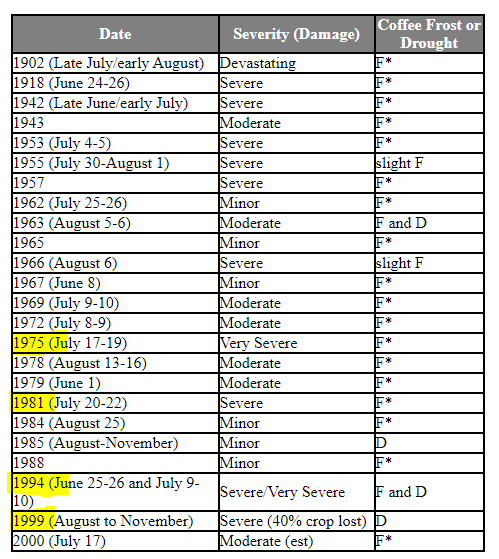 Very large losses in coffee production occurred in 1994 and 1999. The biggest price reaction took place after the wave of frosts in 1975. Source: coffeeresearch.org, ICO
Very large losses in coffee production occurred in 1994 and 1999. The biggest price reaction took place after the wave of frosts in 1975. Source: coffeeresearch.org, ICO
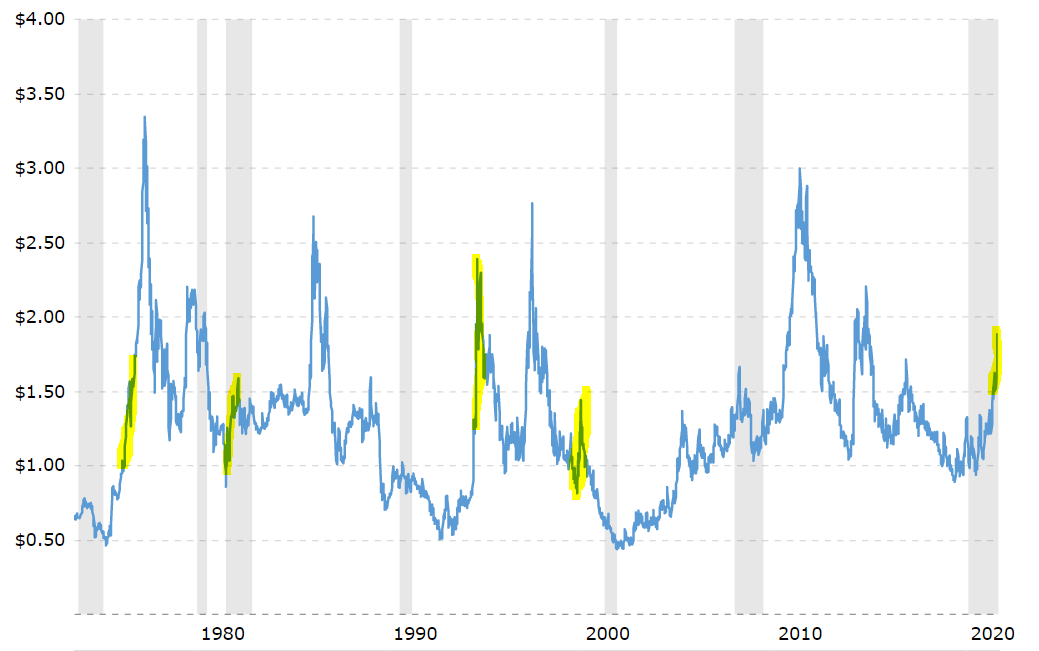 The above chart shows (marked in yellow) price movements during severe frosts. It is worth noting that previously the upward movement after frosts never started from such high levels. Source: macrotrends.net
The above chart shows (marked in yellow) price movements during severe frosts. It is worth noting that previously the upward movement after frosts never started from such high levels. Source: macrotrends.net
Sugar:
- Sugar responds positively to changes in coffee prices, although these markets are not interconnected at the moment
- Sugar is grown at much lower levels than coffee, so temperatures should not damage sugarcane crops
- The key factor for sugar, however, is the price of crude oil which determines the demand for biofuels
- Nevertheless, the fundamentals in the sugar market in both Brazil and India are the most strained in years, which could lead to further price increases
- As a curiosity, it is worth noting that sugar prices are rising very strongly in Asian countries. The price in Iran has doubled in recent weeks.
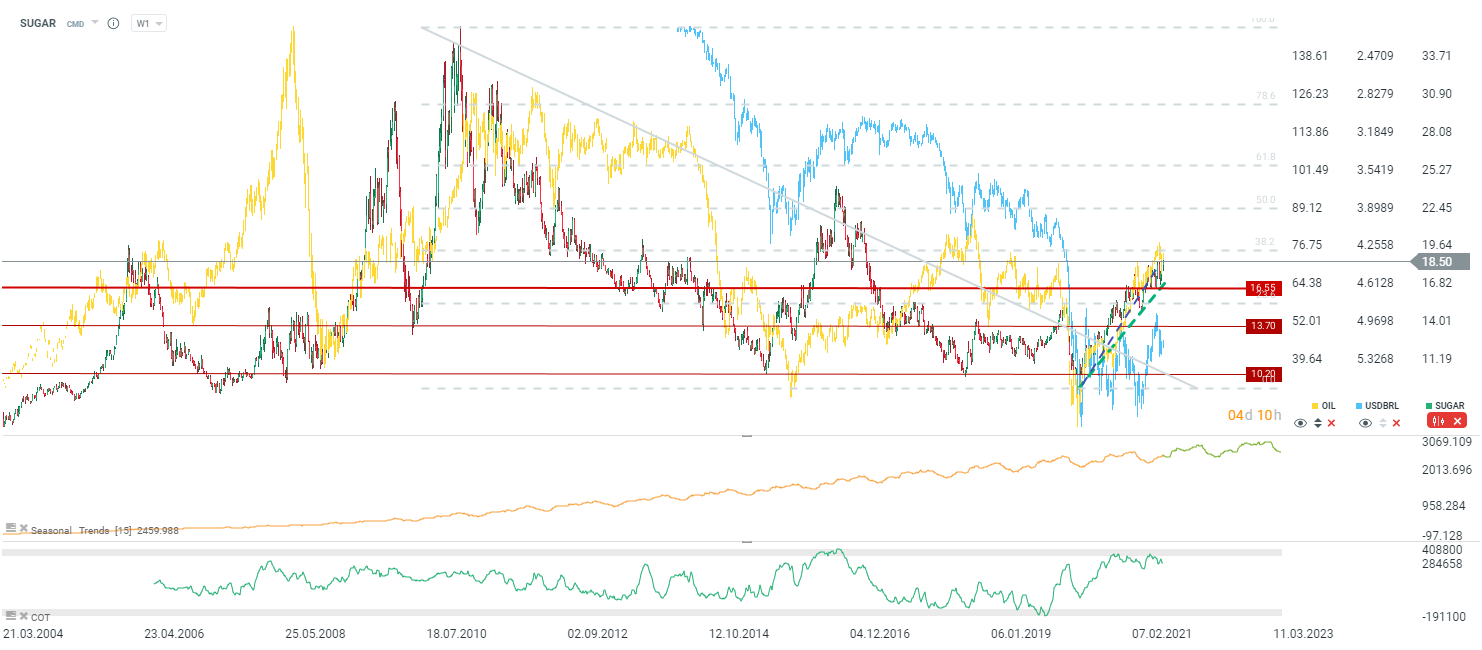 The correlation between sugar and oil is currently very high, which results from the fact that the supply of sugar is limited mainly by the demand for cane from ethanol producers. Source: xStation5
The correlation between sugar and oil is currently very high, which results from the fact that the supply of sugar is limited mainly by the demand for cane from ethanol producers. Source: xStation5
Oil:
- Crude oil may be sensitive to information about the next coronavirus waves
- China's oil imports are expected to decline significantly
- The refineries in China are currently operating at slightly lower capacity than last year, which shows that demand is not rebounding as strongly as previously expected. On the other hand, from the beginning of this year to the present time, the production capacity is higher than in the corresponding period a year ago
- Import prices in Shandong (the main region with private refineries in China) are falling
- India plans to "commercialize" its strategic oil reserves. They intend to lease warehouses and allocate some of the oil for trade (willingness to take advantage of high prices and benefit from lower purchase prices in the future)
- American producers are rapidly exploiting previously unfinished wells to increase production and sales
 The use of power in Chinese refineries. Source: S&P Platts
The use of power in Chinese refineries. Source: S&P Platts
 Crude oil prices continue to rebound in an attempt to erase losses from the beginning of the week, which was associated with a pullback in equity prices. Nevertheless, price increases may be limited by concerns regarding a smaller recovery in demand. Source: xStation5
Crude oil prices continue to rebound in an attempt to erase losses from the beginning of the week, which was associated with a pullback in equity prices. Nevertheless, price increases may be limited by concerns regarding a smaller recovery in demand. Source: xStation5
Natgas:
- Gas prices are breaking the $ 4 MMBTU level
- With strong increases in gas prices in the US, we also observe a strong increase in prices in Europe. NBP gas prices in the UK rose to the highest levels in 15 years! Dutch TTF gas prices close to historical records
- High gas prices in Europe may trigger an increase in demand for LNG from the US and Australia
- Demand for gas in the US will grow due to the return to the Paris Agreement and the desire to reduce CO2 emissions. Thanks to the use of gas, in 2020 CO2 emissions related to electricity production in the USA were the lowest in 40 years. Of course, the demand for electricity itself also decreased throughout 2020 due to the pandemic.
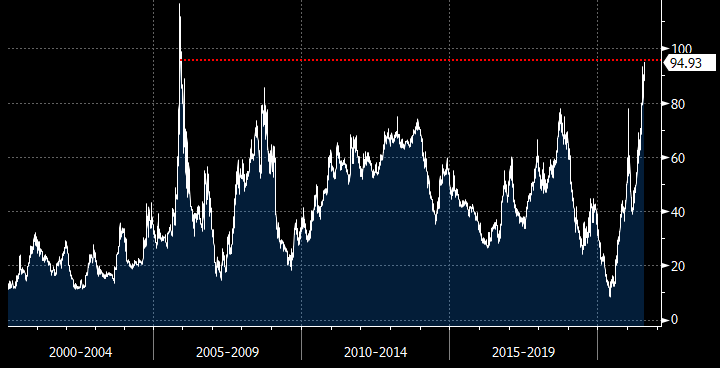 Gas prices in the UK at the highest levels in 15 years! Source: Bloomberg
Gas prices in the UK at the highest levels in 15 years! Source: Bloomberg
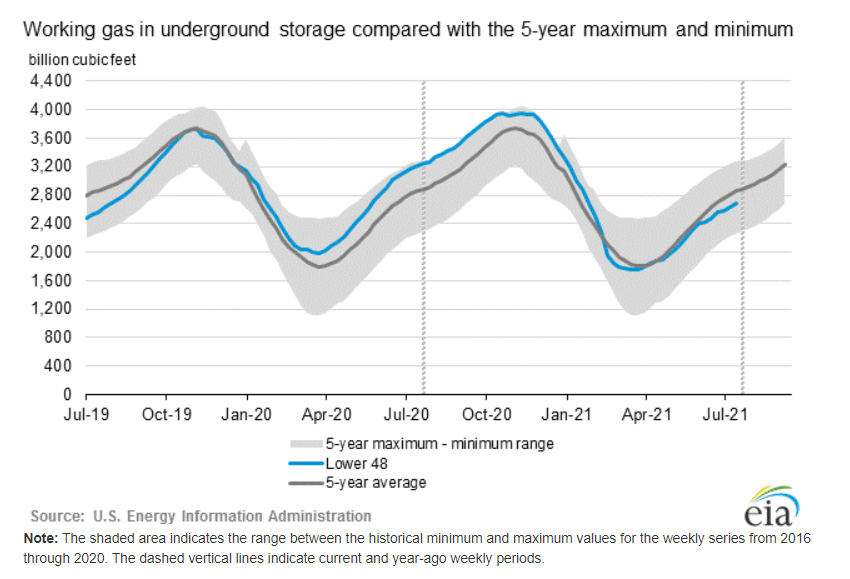 Gas inventories are rising, although they remain below the 5-year average. Source: EIA
Gas inventories are rising, although they remain below the 5-year average. Source: EIA
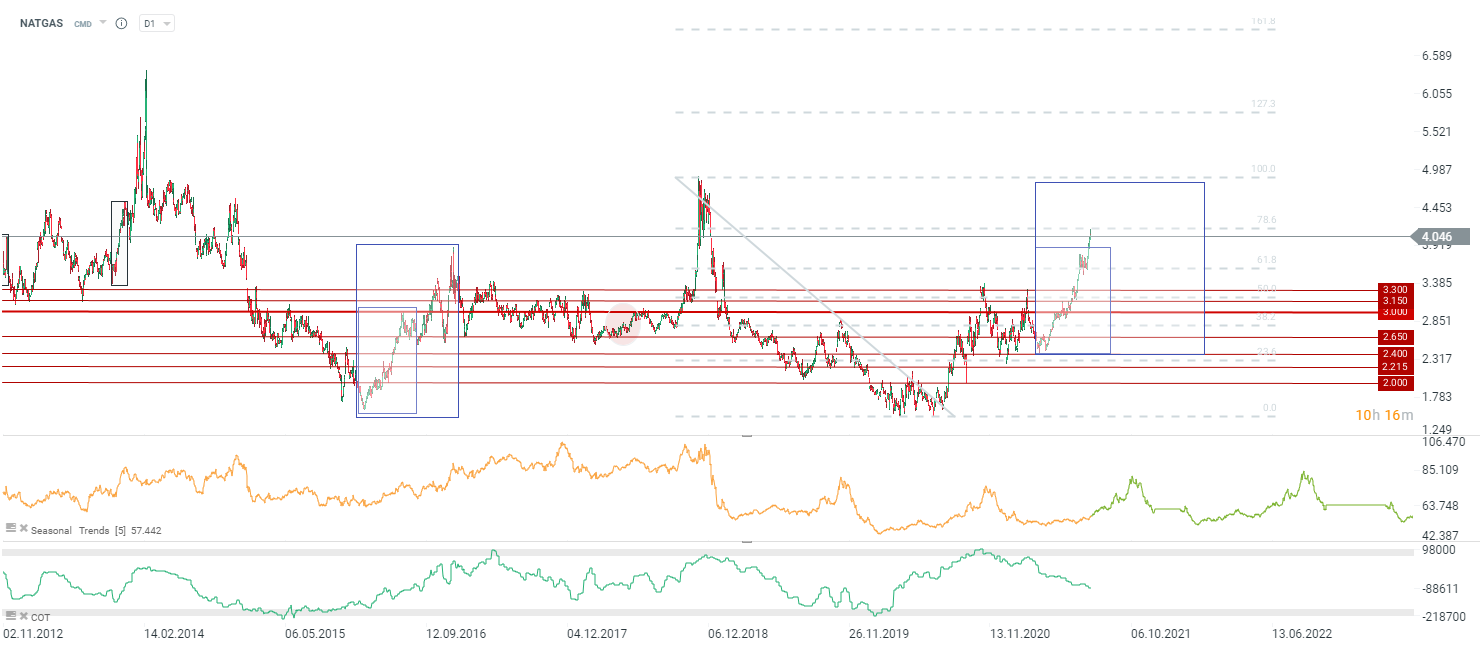 Net positioning is falling, although at the same time the number of positions is growing, both short and long, although at a different pace. One can see that the seasonality indicates the beginning of an uptrend. Source: xStation5
Net positioning is falling, although at the same time the number of positions is growing, both short and long, although at a different pace. One can see that the seasonality indicates the beginning of an uptrend. Source: xStation5
BREAKING: NATGAS muted after almost in-line EIA data release 💡
Will the Fed minutes confirm a pause in further easing? 🔎
Daily summary: Wall Street tries to rebound 📈Amazon and Microsoft under pressure of Rotschild & Co Redburn
Cocoa tries to stabilize after autumn sell-off 📌


